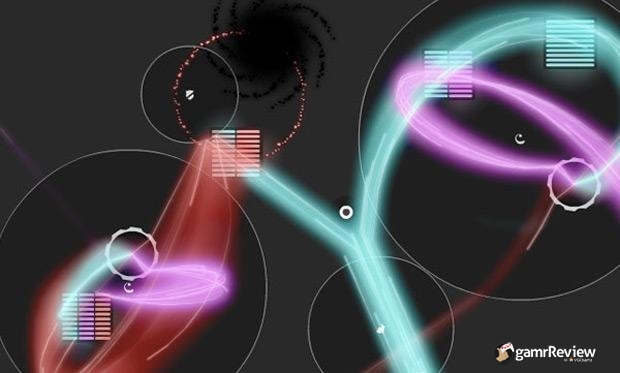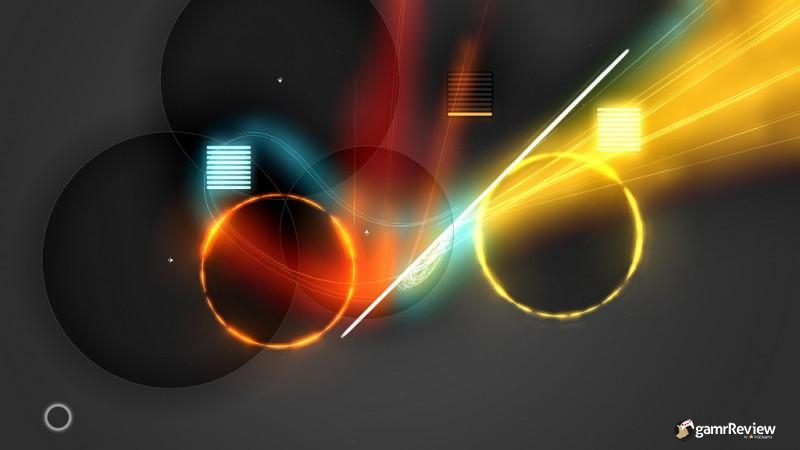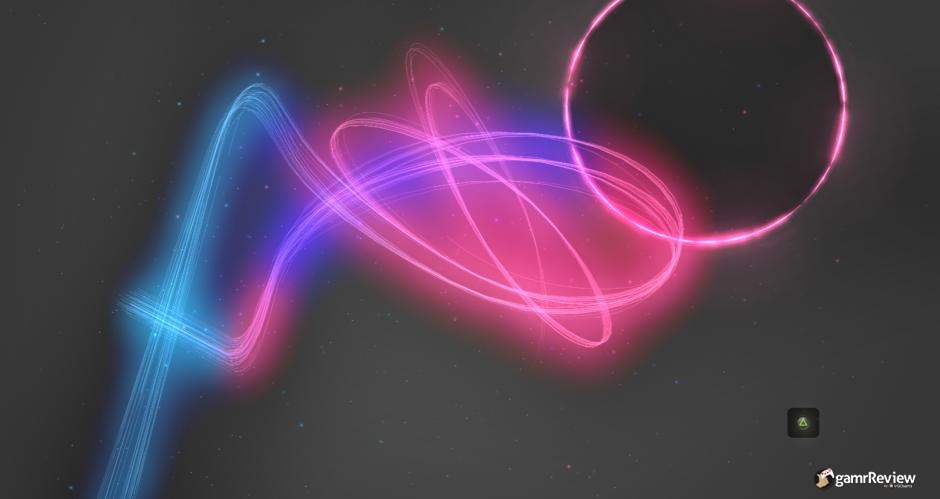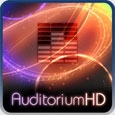
Auditorium HD - Review
by Karl Koebke , posted on 03 December 2010 / 4,606 ViewsSome think that the idea of video games as art is up for debate, but in my mind there are games that have already proven that they can be. Being artistic doesn't necessarily make the game good though. Auditorium HD is an example of a game that seems designed and destined to be hailed as art, but doesn't live up to its potential as a game.

The developers of Auditorium have to be commended for originality at the very least. Your goal is to sheppard particles of a certain initial velocity into specific areas of the screen using varied circles of force effects. These effects vary from simply pushing forces in different directions, to forces that pull particles to the center of the circle, to circles that act as barriers the particles cannot enter or leave, to circles that increase the speed of any particles passing through them without changing their direction. Once particles start reaching their intended destination a meter will go up based on the frequency with which particles pass through the area. If you fill up all the meters on the screen at the same time you win.
Auditorium HD loudly proclaims its Move and 3D capabilities. I bought Move specifically so that I could judge the game as completely as possible, but found the experience dissappointing. Each stage is set up with the meters you need to fill and the effect fields at your disposal already in place. Using the Move you can point at a force circle and click and drag it using the Move's primary button. Ignoring how difficult it was for me to use the blasted thing in my tiny dorm room, this actually worked fairly well, but an important part of Auditorium HD is that you not only move the circles but also expand and shrink them based on what you need. In order to pull this off with the Move you must select a circle with the primary button and then simultaneously press the trigger, then by pointing the Move up or down the circle will expand or contract. This control scheme means it is impossible to move a circle and adjust its size at the same time and later levels that require precise adjustments of position and size are nearly impossible. I wish they had allowed for a different control scheme, since I think mapping the size of the circle to how much you depress the trigger could have made for a fast and easy solution that I would have enjoyed much more.
After an hour of playing around with the Move I stuck with the tried and true Dualshock 3. The R1 and L1 buttons scroll through the different effect fields available while the left analog controls movement and the right analog controls size. My only complaint with this control scheme is that there is no option to adjust the speed with which the circle moves and the default can be painfully slow in some levels. This could be by design, as the game developers try to discourage randomly moving circles in a "spray and pray" philosophy, but the option for slightly faster movement would have been appreciated.

The campaign in Auditorium HD is a no frills affair where you chose from a selection of stages within a certain level and after you complete enough stages (always one less than the total number of stages in the level) you are given access to the next level. No obvious guidelines or impetus for continuing is handed to you and instead the developers hope that your own sense of curiosity and the desire to experiment will spur you on. Each level asks that you master some new trick such as meters that require a specific color of particle (or even multiple colors), circles that change the color of any particle that passes through it, walls that can act as barriers, walls that change the color of particles that hit them, portals, and even black holes that suck wayward particles into a useless singularity.
While the game starts out as a puzzle game, where you can map out a route you want the particles to go in and set circles accordingly, the more complex levels turn it into more of a game of experimentation in which you just have to try things out until something works. Experimentation for its own sake can be fun, but when the outcome is as benign a reward as a song and another puzzle it can be hard to keep motivated to press on. Overall, Auditorium has a really cool idea behind it but I feel like the execution is wanting. It ends up as more of a tech demo than a fully fleshed out game. That said, it is an interesting tech demo that I could see being useful in physics classes with the intent of teaching students about the affect of fields of force on a moving object.
Visually the game is simple and nothing technically amazing, but the sight of a finished puzzle with streaming particles of different colors will make you pause to stare at it more than once. Sound design relies on the universal understanding and general enjoyment of classical music, as each meter you fill in a level starts an instrumental member of an orchestra. It's a nice way to hear how close you are to completing the level, as well as giving you a musical reward to listen to after you have finished; nothing I would buy on a CD, but it fits the game very well.

The PSN release of Auditorium is not just called Auditorium HD because of its resolution. There's also a whole new set of levels to play around in, as well as the originals from the PC release. Playing through both Auditorium Classic and Auditorium Modern, as they are called, took me about six hours and I would estimate that the time was equally distributed between the two modes. I love when developers add new content to a port to make my $10 worth it but I was dissapointed in how similar the two modes were. They both start at the same level of difficulty and their levels share many of the same tricks, so what was an unexpected twist in one mode becomes ho hum in the other, so playing through one mode and then the other felt more repetitive than perhaps it should have.
Auditorium HD is one of the coolest concepts for a game I've seen in a while, and as a career scientist I enjoyed the presentation as well as the emphasis on experimentation, but it's left wanting in other aspects of game design. The value is hampered by having six hours of content that feels more like three played through twice, and fighting for 20 minutes on a single stage only to be rewarded with a pretty scene and a song can sap the will to play right out of you. That said the game's presentation definitely has its moments and the first few stages in each level after a new element is introduced are quite a lot of fun. Teachers should definitely look into what this game can offer, but perhaps the rest of us should just wait for the next cool indie PSN game.
VGChartz Verdict
6.8
Decent


























 Essay Pro
Essay Pro